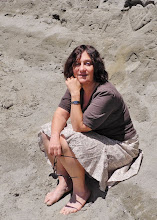 I, too, feel as if Marcel Proust is by my side whenever I listen to music, especially during my sessions with young people. While teaching the Saint-Saëns "Havanaise" to our gifted concertmaster from Garfield High School, I reached into the book-shelf and found a recording of the legendary French violinist, Jacques Thibaud, performing the same work. During many of my teaching sessions, I encourage students to listen to the masters from the past, to glean from them, to endeavor to copy the subtlest nuances for purposes of refinement. A performance of Brahms "Hungarian Dance" rendered by Joseph Joachim proves a more valuable tool for learning than any of my words or gesticulations. I'll admit there are times when it's best when I remain silent for a short period during the lesson, and allow the disembodied voices of Fritz Kreisler and Pablo de Sarasate from the CD player to fill the studio, and speak for me.
I, too, feel as if Marcel Proust is by my side whenever I listen to music, especially during my sessions with young people. While teaching the Saint-Saëns "Havanaise" to our gifted concertmaster from Garfield High School, I reached into the book-shelf and found a recording of the legendary French violinist, Jacques Thibaud, performing the same work. During many of my teaching sessions, I encourage students to listen to the masters from the past, to glean from them, to endeavor to copy the subtlest nuances for purposes of refinement. A performance of Brahms "Hungarian Dance" rendered by Joseph Joachim proves a more valuable tool for learning than any of my words or gesticulations. I'll admit there are times when it's best when I remain silent for a short period during the lesson, and allow the disembodied voices of Fritz Kreisler and Pablo de Sarasate from the CD player to fill the studio, and speak for me.Proust's invented composer, Vinteuil, is regarded as having been inspired by Camille Saint-Saëns, whose artistry Proust revered. Of his pianistic ability, and his performance of a Mozart Concerto at the Paris Conservatoire, Proust noted: "In Saint-Saëns' playing there are no pianissimos where you feel you'll faint if they go on any longer, and which are cut off just in the nick of time by a forte, no broken chords sending instantaneous shivers down your back, none of those fortissimos which leave you bruised from head to foot, as if you had been surf-bathing, none of those pianist's writhings and tossed back locks of hair, which infect the purity of music with the sensuality of the dance..."
The young, dashing fictional violinist, Charles Morel, who sweeps through the Parisian, aristocratic society performing in the most sought-after soirees, causing the ladies to swoon in their own salons, is portrayed as an up and coming rival to violinists Enescu, Capet and Thibaud. Hearing Thibaud's purity of sound on the recording of "Havanaise", the nobility of phrasing, mouth-watering portamenti, and almost imperceptible vibrato, I feel myself going back a hundred years, as if stepping right into the pages of "Remembrance of Things Past". Thibaud "French to the tip of his bow" was born the same year as Proust, 1880.
As I revisit Proust's depiction of the violinist Morel, his artistry, and the elixir of seduction that was Vinteuil's music, with notes and phrases painted in sublime and dazzling colors, I begin to hear Thibaud and Saint-Saëns in a different and more personal way, as if my old ears have been replaced with newer, more attuned ones. Marcel Proust has composed "Remembrance of Things Past" in various keys of solemnity and joy, a symphony of colors, with words that sing, dance and are loved, reminding the reader that Art is Eternal.

No comments:
Post a Comment